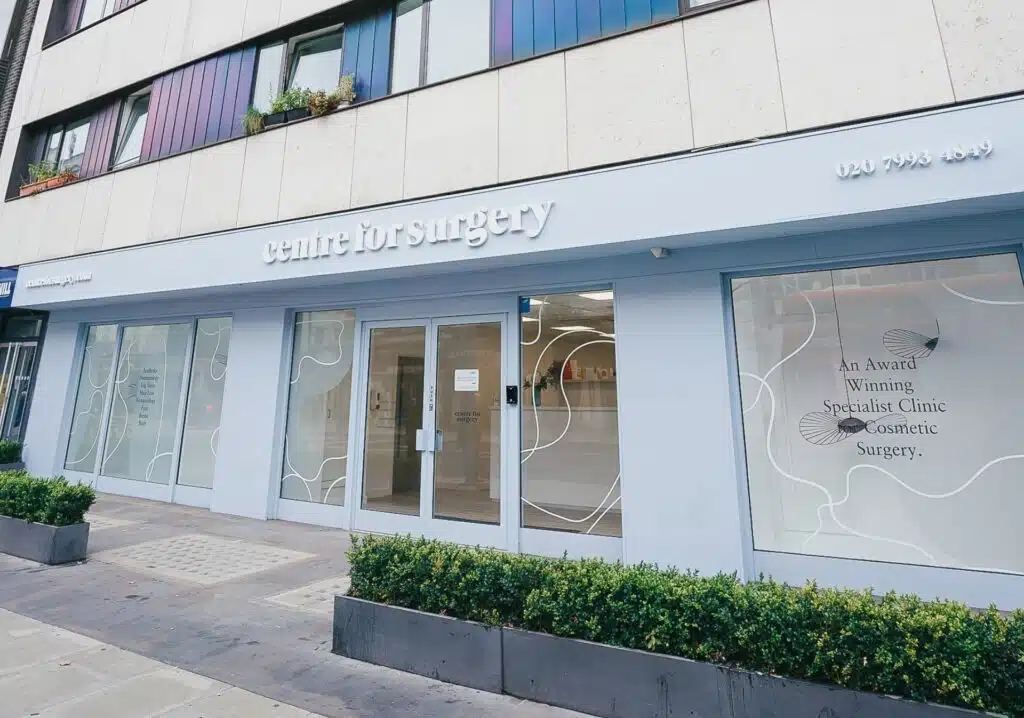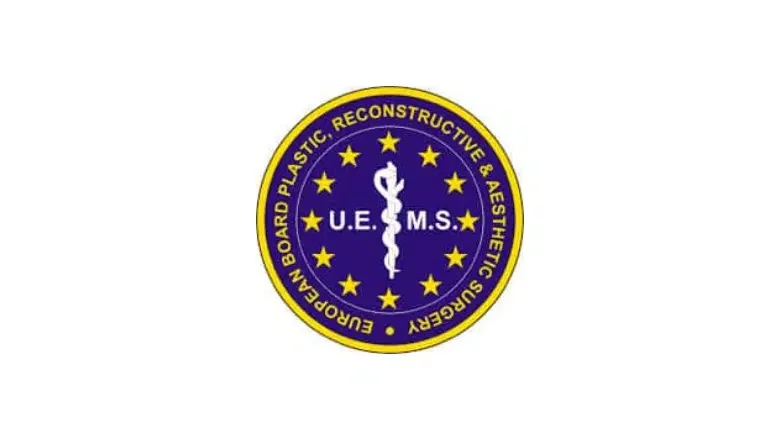After fat transfer to breasts, it is essential to ensure the breasts are well supported and to avoid any strenuous activities as the transferred fat will require time to establish a fresh blood supply to the fat cells. This process takes approximately two weeks, and we advise you to wear the postoperative support bra your surgeon recommended. This should be worn continuously throughout the day and night for at least six weeks. After this period, you may wear the post-operative bra during the daytime only for a further 12 weeks after breast fat transfer.
RELATED: Fat transfer breast augmentation pros and cons
It is common to experience bruising and swelling during the first week after that transfer, and you may experience a mild degree of discomfort. Any pain can be easily controlled with over-the-counter painkillers such as paracetamol. Most patients report any discomfort that has fully resolved after two weeks. You will be reviewed by a member of our post-operative nursing team for a wound check approximately one week after surgery. It is common for certain parts of the breast to have a firm consistency, and there may even be localised areas of tenderness which can persist for up to 6 weeks. This is due to inflammatory changes and specific areas of grafted fat that may take longer to establish a blood supply.
Most people can commence light activities, including homeworking, after three days and may carry out light office duties after one week. We recommend refraining from strenuous exercise for at least six weeks, and your surgeon sometimes recommends up to 12 weeks. It can take up to 6 months for the shape of the breasts to mature, and final results are expected by this time. One of the reasons why many women choose to have fat transfer breast augmentation is the permanent nature of the procedure. Once fat cells have successfully settled in the breast, any fat cells that become part of the breast tissue will remain permanently, and there is no further requirement for a second procedure to transfer additional fat. The size and shape of the breasts will change over time due to the effects of the ageing process and significant weight loss or gain.
Pregnancy and breastfeeding may also affect the results of fat transfer to breasts. Any transferred fat becomes part of the existing fat cells in the breast. There is no need to have breast fat removed or further fat grafting, unlike implant-based procedures where breast implant removal or breast implant replacement is often required later.
Breast augmentation with fat transfer can be considered a two-in-one procedure. The first part of any fat transfer procedure involves liposuction to remove areas of excess fat. Patients can develop a sculpted and better-toned body shape in the area where fat has been removed. Patients should remember that liposuction effectively removes substantial quantities of fat but never removes all fat from a given area. A certain amount of fat cells must be left behind to preserve the viability of the skin. The results of fat transfer to breasts can be affected by people who gain a significant amount of weight, so we would recommend maintaining a healthy diet and physical exercise to maintain the results of your procedure.
How long does fat transfer to breast recovery take?
Recovery after fat transfer to breasts takes approximately two weeks to allow healing to take place. After two weeks, patients may resume certain everyday activities, including returning to work and most household activities. Recovery and healing will differ between individuals based on several factors, including the overall state of health, lifestyle habits, and the amount of fat transferred.
RELATED: What is the recovery time for fat transfer to breast surgery?
Centre for Surgery is an expert in all types of fat transfer surgery, including fat transfer to breasts, and our surgeons will discuss the procedure in detail. They can answer any questions or concerns about any aspect of the procedure. You can learn more by calling us on 020 7993 4849 or completing the contact form below to book a consultation.
RELATED: What does fat transfer recovery involve?
Can belly fat be used to enhance the size of the breasts?
Yes. One of the most common areas for harvesting fat is the abdomen. Many people are keen to get rid of belly fat, and liposuction is highly effective for removing stubborn areas of fat, which can then be used to transfer fat to the breasts. Many women prefer to have a fat transfer procedure as they are keen to achieve natural-looking results, which may not be possible with breast implant surgery. It is essential to remember that fat transfer to the breasts may not be suitable for everyone, as sufficient fat stores will permit enough fat to be grafted to the breasts and achieve significant results. Exceptionally thin people may be better suited for breast augmentation surgery with implants.
What does fat transfer surgery involve?
The general principle of fat transfer involves the removal of fat with liposuction from an area with excess fat, such as the abdomen, thighs, hips or back. The fat is removed using gentle suction to preserve the delicate structure of the fat cells. The suctioned fat is then processed to remove impurities. The processed fat is then precisely injected into targeted areas of the breast using specialised injection cannulas inserted via tiny incisions. After two weeks, the grafted fat becomes integrated into the existing fat tissue of the breasts. The desired result is bigger and better-shaped breasts, which appear in proportion to the rest of the body silhouette.
Can fat transfer affect my ability to breastfeed?
Fat transfer to the breast is not known to affect breastfeeding as the procedure involves making tiny incisions in the lower breast crease followed by the injection of fat. The area of surgery is well away from the nipple, so the milk ducts are preserved.
It is important to appreciate that natural breast augmentation with fat transfer is a relatively new technique for natural breast enhancement compared with breast implants, which have been around for many years. Therefore, the scientific data for the potential effects of breast fat transfer on breastfeeding is less well-developed.
If you have any concerns about your ability to breastfeed after having fat transfer to your breasts, please discuss this with your surgeon at your consultation at the Centre for Surgery. You will receive personalised advice on the potential risks and complications to allow you to make a fully informed decision on proceeding with surgery. If you want to learn more about the risks of fat transfer to breasts, please get in touch with us to book a consultation.
Why choose Centre for Surgery for breast fat transfer?
Centre for Surgery is renowned for its significant expertise in all types of fat transfer surgery, including fat transfer to breasts. Our surgeons are best placed to offer you personalised advice and recommendations on the best treatment options. Please get in touch with us today to book a face-to-face consultation with an expert surgeon at our Baker Street clinic in Marylebone and start your journey towards achieving larger and natural-looking breasts without needing implants.
RELATED: How much does fat transfer breast augmentation cost?










